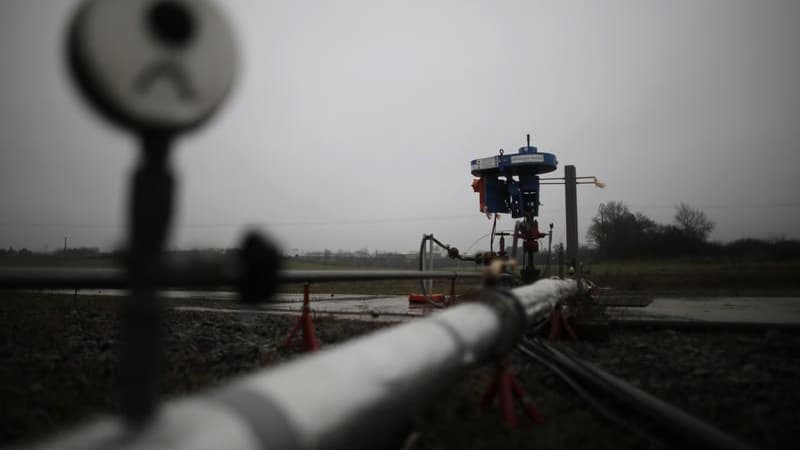This may be a turning point in the French hydrogen sector. A few weeks ago, the French energy company (FDE), which produces energy with a negative carbon footprint, announced an exceptional discovery. In fact, Lorraine CNRS researchers have found large amounts of white hydrogen in the basements of the mining basin around the Folschviller axis. The latter is the subject of a drilling program under the Regalor research project (REssources GAzières de LORraines) launched four years ago by scientists from the University of Lorraine and the CNRS with the support of EDF.
Invited to the set of BFM Business this Friday morning, the CEO of Plastic Omnium Laurent Favre explained this particular form of hydrogen: “White hydrogen is natural, native hydrogen. Unlike the green or gray hydrogen that we produce, which is the hydrogen that is used in large quantities today, white is somewhere on the planet and plenty of it is available. It’s usable as is, it can be the oil of tomorrow.”
The hydrogen content increases with depth.
Enthusiasm is all the greater among researchers and other players in the sector as this discovery is almost the result of chance. Initially, this research project had the objective of studying methane, present in large quantities in the Lorraine subsoil, and more specifically the famous “firedamp”, that gaseous layer of the subsoil resulting from the degradation of coal layers and which could cause deadly explosions in mines
To quantify this methane in the Lorraine coal basin, the researchers designed an exceptional probe capable of descending more than 1,000 meters deep in a hole just six centimeters in diameter. Since the end of 2022, they discover a small amount of hydrogen at a depth of 600 meters, but note that this increases as the probe penetrates the basement: one kilometer below ground, the hydrogen concentration exceeds 15%. “The deeper we go, the more oxygen will decrease until it disappears,” Jacques Pironon, director of the GeoRessources laboratory at the University of Lorraine, told France 3. The more oxygen decreases, the more the other gaseous species, that is, hydrogen, will be present.
Additional investigations on other wells
The strong presence of iron ores in the subsoil of Lorraine encouraged Jacques Pinoron to consider with France Bleu the existence of “a real hydrogen factory under our feet”. According to the researchers, the hydrogen content could even exceed 90% at a depth of 3,000 meters, so that the reserve could contain around 46 million tons of natural hydrogen, which corresponds to more than half of the production annual world hydrogen today.
However, these hypotheses will have to be confirmed with more deeper drilling in the region. It is with this in mind that the FDE submitted an application last March for the granting of an exclusive mining exploration permit known as the “Trois-Évêchés Permit” for the exploration of natural hydrogen (H2) in the Lorraine mining basin. This application covers an area of 2,254 km², in the departments of Moselle and Meurthe-et-Moselle. The Moselle company also plans to carry out new hydrogen concentration measurements in three other wells to enrich studies on the mechanisms of formation, transfer and production of white hydrogen in the Lorraine geological context.
Feeding the MosaHyc pipeline to Germany
These studies will make it possible to identify a pilot site where local production and recovery of natural hydrogen will begin in Grand-Est. But there is still a long way to go in terms of production to determine how to extract the resource. “In the face of the industrial exploitation of this resource, we must forget the conventional exploitation models of the oil and gas industry and invent everything”, emphasizes Jacques Pinoron, who gives himself two years to “develop a reliable industry model”. Currently, there is no technology to separate hydrogen from other gases deeper than a kilometer.
The projections continue to be no less radiant for the Française de l’Energie, which plans to produce white hydrogen continuously without rejecting the smallest gram of CO2. With France 3, the general director of the FDE Antoine Forcinal already anticipates a future important use for the extracted resource: “We are close to the MosaHyc gas pipeline project that will connect Germany with the Greater East region to mainly supply industrialists and convert them to hydrogen white. This is a very good point because it is not enough to build a pipeline, you still have to fill it.”
Source: BFM TV


